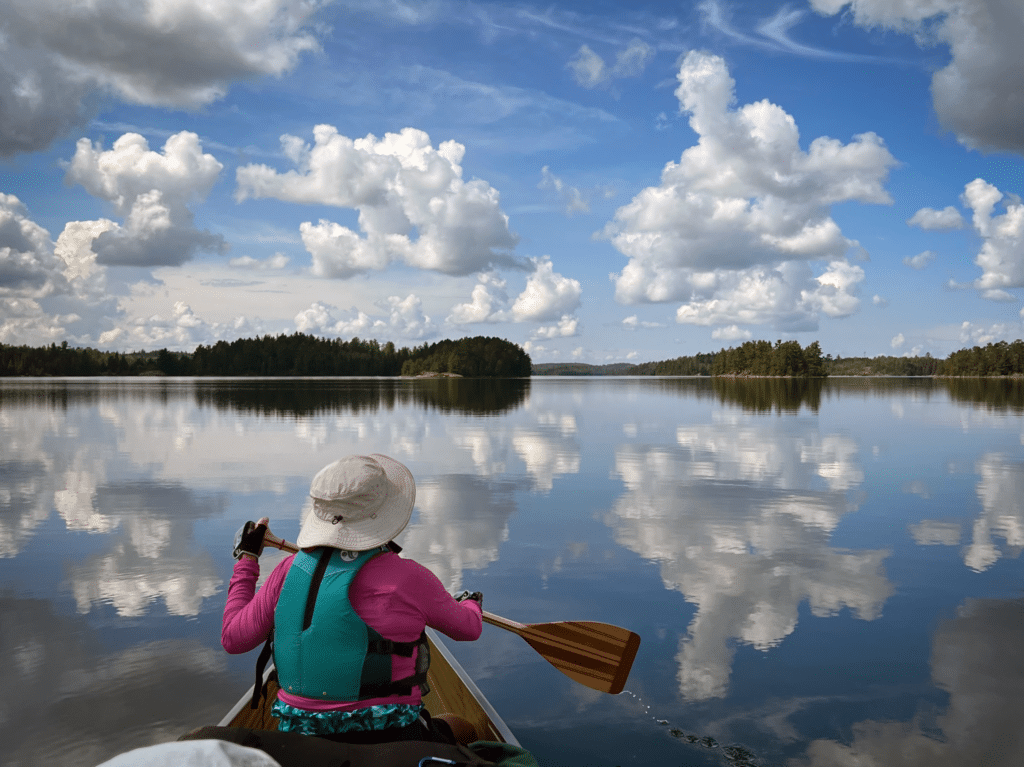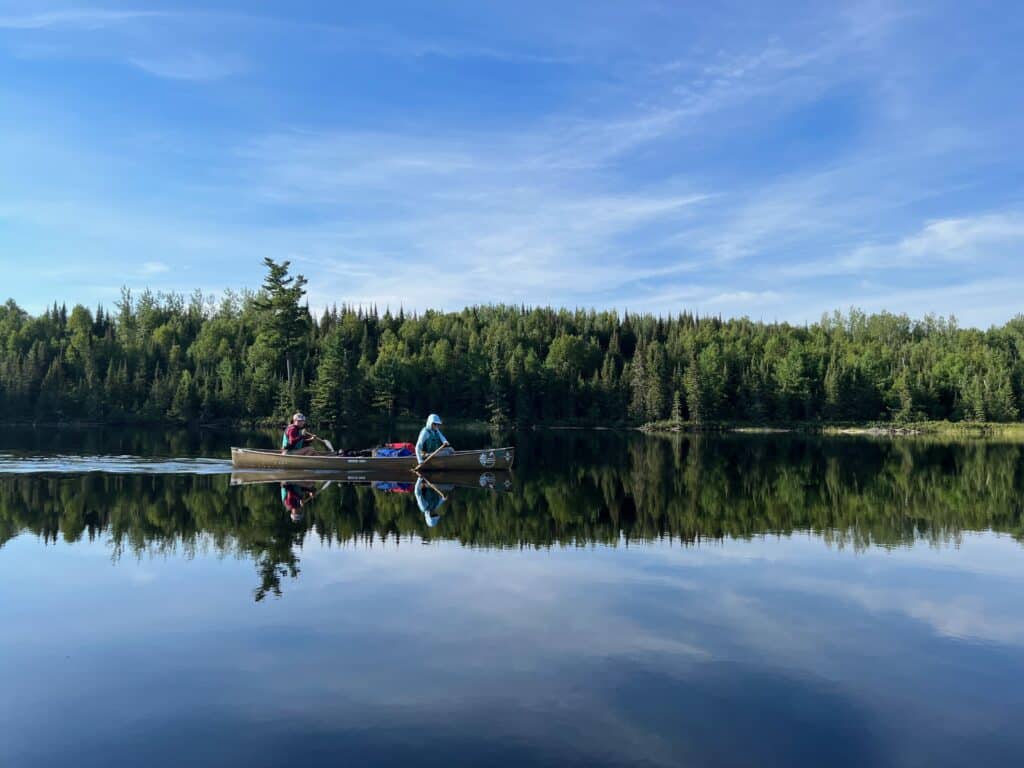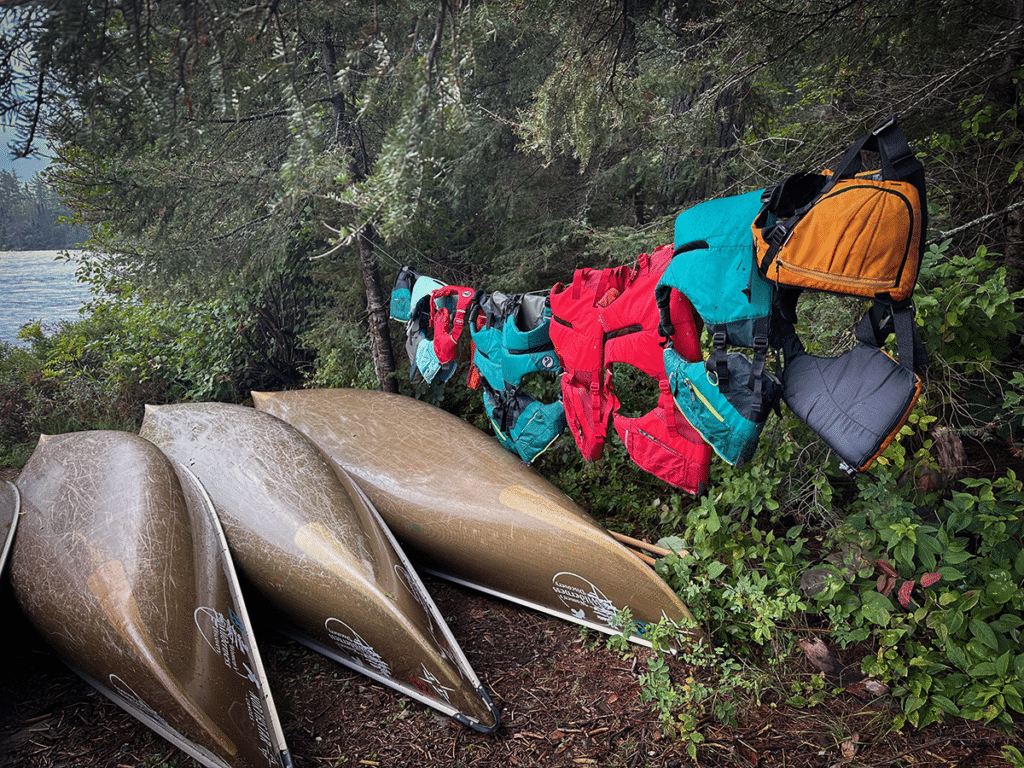
Recent incidents in the Boundary Waters Canoe Area Wilderness have resurfaced a long debate about whether people should be required to wear personal flotation devices (PFDs).
Minnesota’s current law requires all watercraft (including canoes) to carry one U.S. Coast Guard-approved life vest for each person. Children under ten must wear an approved life jacket while on board.
A bill proposed by Minnesota State Representative Kim Hicks would go further, mandating boaters in Minnesota to be wearing a life jacket from October through April. While the wilderness is locked in ice during most of those months, it does raise the question of whether life jacket laws should be amended. However, some local outfitters and guides question whether another law will effectively address the issue or if people can be relied upon to exercise common sense.
Incidents on the rise
Almost one drowning is recorded in the BWCAW every year on average. Yet as of mid-June, there have been three fatalities so far in 2024 and multiple rescues. So far this season, the St. Louis County Rescue squad as put in over 6,000 volunteer hours. Rick Slatten, Captain of the squad told the Star Tribune, that “in the history of the squad, there have been 507 water fatalities.” He went on to add, “only 14 were wearing a life jacket.”
St. Louis County Search and Rescue receives about 30 calls annually, with most originating from visitors in the BWCAW. Despite the presence of portage trails around hazardous water, such as rapids, people still occasionally attempt to run them.
The most recent Minnesota DNR boating accident report indicates that there were 9 boating fatalities throughout the state last year. Less than the average number of 14 for the past decade. Roughly 55% of those individuals didn’t have on a life jacket, despite Minnesota ranking as the fourth state in the U.S. with the highest number of lakes.

Experts weigh in
Arguments against wearing a life jacket include concerns about personal freedom, swimming skills, life jacket fit, warm water or air temperatures, along the perception that an incident won’t occur.
We followed up with local outfitters and guides for their takes.
Peta Barrett, owner of Women’s Wilderness Discovery based in Ely said she would support a law requiring people to wear a life jacket during the soft water season.
She told QSWN, “I don’t know how enforceable a law would be, but I agree that they should be worn, properly fitted, and snug. Especially after hearing about so many deaths and injuries this season. It’s a small price to pay for peace of mind and safety.”
Sawbill Canoe Outfitter owner and guide, Dan Shirley commented that it’s a complicated question when “you consider the ‘how’ of such a rule and what type of nuance might be considered. For example, a statewide law vs a BWCA-specific regulation that perhaps is created by the Forest Service.”
He stated, “An appropriately nuanced law requiring them [life jackets] is something we would support.”
Outdoor writer and wilderness guide Cliff Jacobson emphasizes the importance of wearing life jackets. “Paddlers who have never capsized have no idea what happens when one does. They think that being a ‘good swimmer’ is what counts. Well, swimming is easy when the water is warm, the sea is calm, and you’re close to shore.” he says.
“But capsize far from shore on a big lake like Brule, Seagull, or Saganaga, and your ultralight Kevlar canoe will likely be blown out of reach, and you’ll need to swim to shore—while wearing clothes and shoes.” That being said, Jacobson expresses, “I would not support a law that requires people to wear them. I’m fed up with ‘requirements’!”

Considering the risks
Paddlers face higher risks during shoulder seasons, such as May and September. Cold lake and air temperatures combined with windy days increase the chances of cold water immersion and hypothermia. Heavy spring rains cause rivers and lakes to rise, sometimes significantly, leading to stronger currents and challenging portage landings.
While peak summer visitors in the BWCA may experience hot days, the average temperatures from June through August are generally mild, even cool in the mornings or evenings. Combined with lake temperatures, this can exacerbate issues for those who unexpectedly end up in the water. Plus, mid-season storms are common.
While each person must decide whether or not to wear a life jacket, many manufacturers have worked to make that choice easier. Newer products feature design updates that more comfortably suit all sizes and genders.
In the end, people who consider themselves experienced canoeists will assess all risks before embarking on a wilderness trip. This includes researching current conditions and honestly evaluating everyone’s fitness and skills. It’s also important to remember those who may need to be called upon to help if an incident occurs. Returning home with incredible memories is always the goal.
More info:
- How a Boundary Waters fishing trip turned tragic and led to an extraordinary rescue
- Life jacket bill as introduced by Rep. Kim Hicks (DFL) District 25A – Office of the Revisor of Statutes
- How to Choose PFDs (Life Jackets) – REI
- Life jacket requirements – MNDNR
- Smart & Safe Wilderness Travel – USFS Superior National Forest

Wilderness guide and outdoorswoman Pam Wright has been exploring wild places since her youth. Remaining curious, she has navigated remote lakes in Canada by canoe, backpacked some of the highest mountains in the Sierra Nevada, and completed a thru-hike of the Superior Hiking Trail. Her professional roles include working as a wilderness guide in northern Minnesota and providing online education for outdoor enthusiasts.

